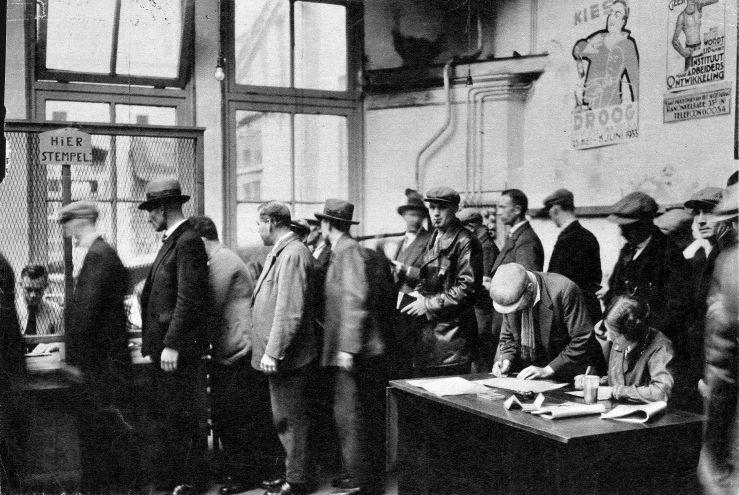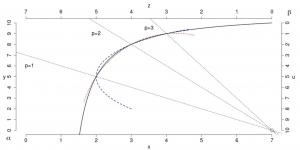
This post is based on an article accessible here presented at a workshop held in Nice in September 2022 on how coordination issues were handled in the past. All comments are welcomed.
In the turmoil of the Great Depression, the young Dutch economist Jan Tinbergen considered that the works of Leon Walras and Gustav Cassel could be helpful in identifying the conditions under which an economy may experience mass unemployment. For this purpose, he developed a diagrammatic analysis, presented to the Netherland Economic Association in 1932, highlighting the possibility that an economy may stabilize in either two equilibria: one “bad” characterized by low production and high unemployment and one “high” characterized by high production and low unemployment.
This idea, he noted (Tinbergen, 1932: 60), came to him when he was discussing some preliminary and unpublished works of J. G. Koopmans (not to be confused with Nobel prize winner Tjalling Koopmans) that the latter hastened to publish a couple of months later in the main Dutch Economic Journal. While Koopmans acknowledged “the much appreciated help” which “as a non-mathematician” he received from Tinbergen (Koopmans, 1932: 679), he felt the need to underline two important differences between his and Tinbergen’s analysis which yield valuable insights into the early intellectual trajectory of Tinbergen.
The first difference is a problem of Indeterminacy. Seeking to derive an equilibrium with unemployment from Walras and Cassel, Koopmans says, means to be ready to assume that the equality between demand and supply of labor will no more be satisfied and thus that at least one equation of the economic system (the labor market one in this case) will have to be ruled out leaving ultimately the level of employment and money wages undetermined. Koopmans did not doubt that Tinbergen had derived his diagrammatic analysis from a determinate system with non trivial solutions (even if he regretted that he had not provided a clear presentation of it). Simply, he did not believe it possible to derive such a system from Walras and Cassel general equilibrium analysis.
The second difference concerned the possibility of ranking equilibria generated by any general equilibrium determinate system. Just consider an exchange economy with two agents and two goods. It is easy, Koopmans argues, to show that the reduced form of such a system may, for a wide range of configurations, be a polynomial of degree more than one and thus displaying multiple solutions. But because the optimality conditions are fulfilled for each of the three equilibria, there is no reason to think that any of these equilibria will be better or worse than the other (Koopmans, 1932: 702). As a result, no obvious political recommendations as Tinbergen suggests can be drawn from Walrasian systems.

In the years that followed, Tinbergen moved away from Walrasian theory and took the road of macrodynamics. He often claimed with Ragnar Frisch that the main limit of such theory was that it was static. Very likely, his decision was also to get around the difficulties that had raised Koopmans by moving to a ground in which multiple equilibria and policy recommendations could be built around in a straightforward way.